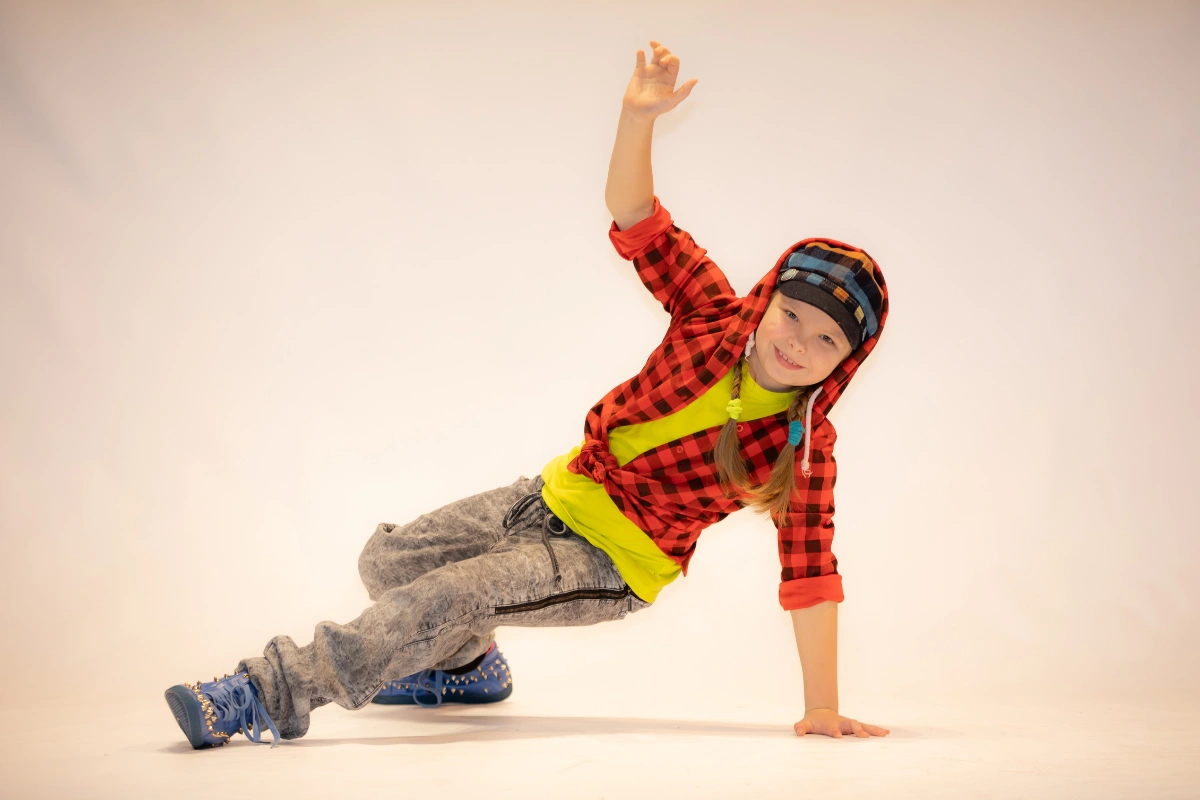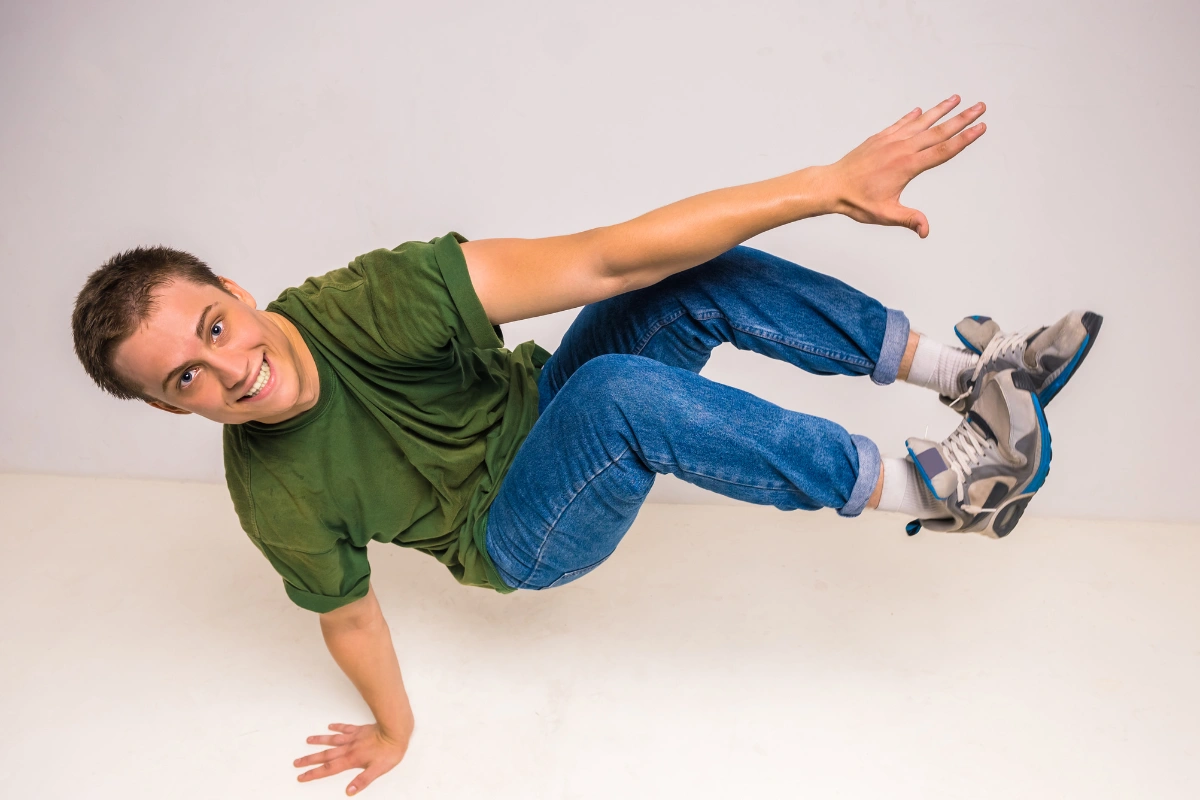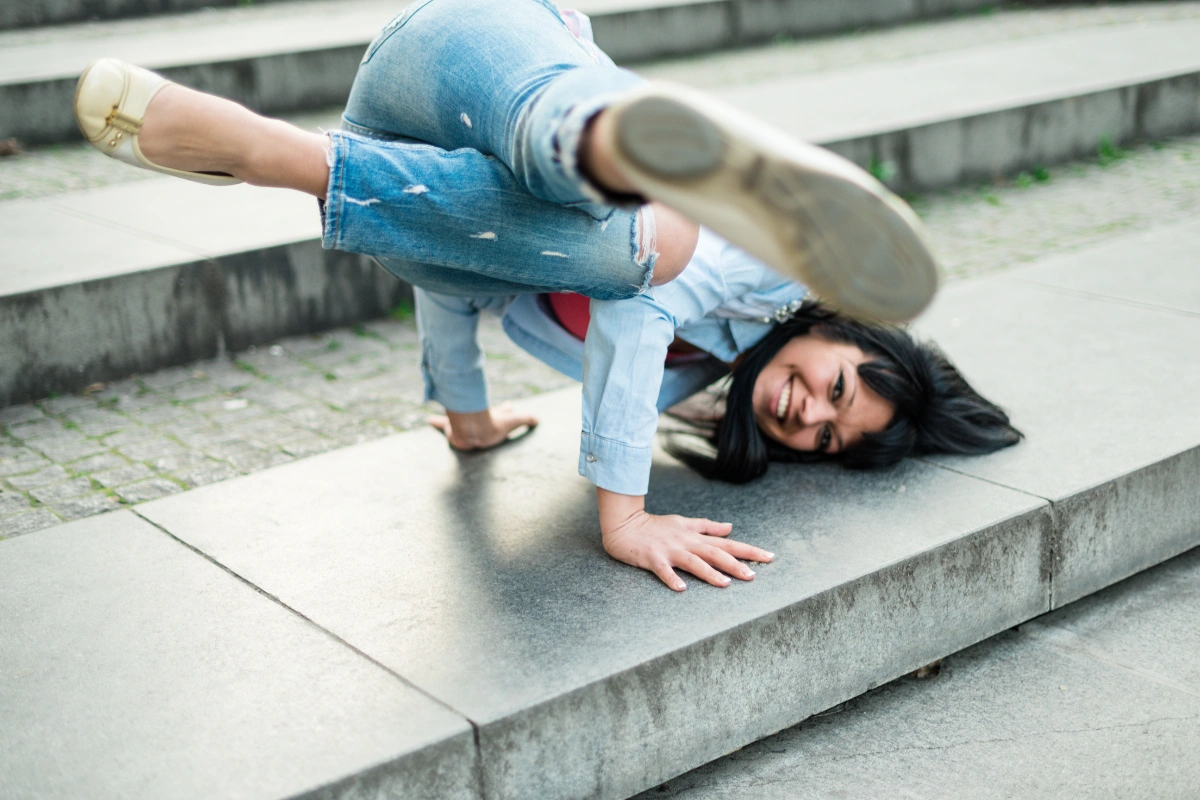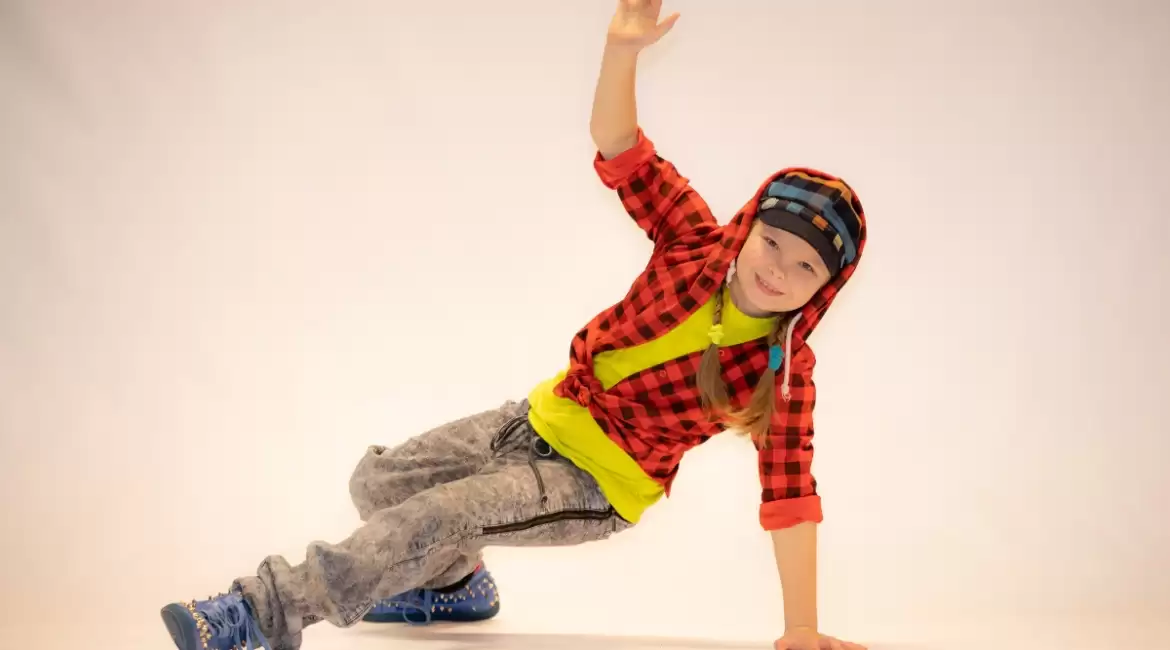Welcome to “How to Do the 6-Step,” your comprehensive guide to mastering one of the foundational moves in breakdancing. The 6-step is more than just a series of movements; it is a crucial building block that will serve as the cornerstone for your footwork and overall dance technique. Whether you’re a beginner just starting your journey in breakdancing or an experienced dancer looking to refine your skills, understanding and perfecting the 6-step is essential.
Breakdancing, or breaking, originated in the vibrant neighborhoods of the Bronx, New York, during the early 1970s. It quickly grew into a dynamic and expressive dance form that combines elements of martial arts, gymnastics, and various cultural dance styles. At the heart of this explosive art form lies the 6-step, a move that embodies rhythm, balance, and creativity.

In this guide, we will break down the 6-step into manageable parts, providing clear instructions and tips to help you learn and practice each movement. You’ll discover the importance of musicality, how to maintain proper form, and ways to avoid common mistakes. Additionally, we’ll explore variations of the 6-step, such as the 5-step, 3-step, and 2-step, to broaden your footwork repertoire.
By the end of this guide, you’ll not only be able to perform the 6-step with confidence but also integrate it seamlessly into your breakdancing routines. So, get ready to dive into the world of breaking, where every step brings you closer to becoming a skilled and versatile dancer. Let’s get started!
What is the 6-step?
The 6-step is a fundamental sequence in breakdancing, consisting of six distinct steps that form the basis of footwork. In this movement pattern, dancers step their feet around their upper body while strategically placing and moving their hands for support. One of the unique aspects of the 6-step is its cyclical nature; it can be performed in a continuous loop because it ends in the same position where it began. To execute a flawless 6-step, a dancer needs to maintain a balance of rhythm, flow, and perfect form.
When starting out in breakdancing, beginners typically learn the 6-step first. This foundational move is crucial as it underpins many other footwork patterns. Once you’ve mastered the 6-step, you can progress to other steps like the 2-step, 3-step, and 5-step, which incorporate elements of the 6-step. By gaining proficiency in the 6-step, you build a solid foundation that makes learning additional footwork moves easier and more intuitive.
Origins of the 6-step
The 6-step, a classic move in breakdancing, traces its roots back to the vibrant neighborhoods of the Bronx, New York, in the early 1970s. This dance style emerged predominantly among Latino and African-American communities, who began to develop and refine their moves on the streets and in parks. The origins of breakdancing are deeply intertwined with various cultural influences and activities prevalent at the time.
Inspired by martial arts like kung fu, the fluid movements of capoeira, the acrobatics of gymnastics, and traditional Puerto Rican dance styles such as salsa, these early dancers combined elements from each discipline. Their creativity and the fusion of these diverse influences led to the development of many ground-based moves, which we now categorize as footwork. Among these foundational moves was the 6-step, which quickly became a staple in the breakdancing repertoire.
In the formative years of breakdancing, the 6-step stood out as a fundamental movement, embodying the essence of the dance style’s innovative spirit. It was characterized by its rhythmic stepping pattern, which circled around the dancer’s upper body, creating a dynamic and visually captivating sequence. This move laid the groundwork for the evolution of footwork in breakdancing, influencing countless other steps and contributing to the dance style’s rich heritage.

Learning the 6-step
There are various approaches to mastering the 6-step, and the method described below is one that works for most people. However, it’s important to remember that personal style can influence how you perform the 6-step, and slight variations may be perfectly valid.
As you follow these instructions, always listen to your body. Avoid forcing any movements, and take breaks if you experience any soreness.
Starting Position
The 6-step begins in a squat position. You should be crouched with your knees bent and balanced on your toes rather than flat-footed. Throughout the entire sequence, you will remain on your toes. Try to keep your back as straight as possible, and if you can, lean your buttocks deeply towards your heels. This position can be challenging depending on your flexibility and strength.
Step 1
- Place your right hand next to your body, slightly behind your right hip, keeping it close. Instead of using a flat hand, perform the 6-step on your fingertips with your thumb raised. This may feel awkward at first, but it will become more natural with practice.
- Shift your weight to your right side, using your right hand for support.
- Move your right leg in front of your left leg, positioning the back of your right knee in front of your left ankle. This movement, known in breakdancing as a ‘hook,’ involves two parts:
- Slide your right leg straight forward.
- Then slide your right leg towards your left leg, connecting the back of your right knee to your left ankle.
Step 2
- Lean on your right arm and move your left leg back, ensuring your right hand is directly under your shoulder.
- Maintain a straight line from your head to your feet, with your hips and buttocks aligned. Engage your core to keep this alignment.
- Your left hand remains off the ground, either held in the air or placed on your hip, depending on your preference.
Step 3
- Bring your right leg next to your left leg while placing your left hand on the ground for additional support. This is the easiest step, as all your limbs are used for support.
- Maintain a straight plank position, with your shoulders directly above your hands and your core engaged.
Step 4
- Shift your weight to your left arm while moving your left foot forward. Your right arm should be off the floor, either held in the air or placed on your hip.
- Keep your leg straight and your core engaged to prevent your hips and buttocks from rising or dropping.
Step 5
- Slide your right foot forward and place it behind your left knee, creating a ‘hook’ position similar to step 1 but in the opposite direction.
- Lean on your left arm, keeping your shoulder aligned above your left hand. Your right hand can be in the air or on your hip.
Step 6
- Complete the sequence by placing your left foot next to your right leg, returning to the crouched starting position. Simultaneously switch your arms, leaning on your right arm positioned next to your hip.
- You are now back in the starting position and ready to repeat the 6-step from the beginning.
Mastering the 6-step takes practice and patience, but following these detailed instructions will help you build a solid foundation in this essential breakdancing move.

Common mistakes
When learning and practicing the 6-step, there are some mistakes that are particularly common. Being aware of these can help you avoid them and improve your technique.
Mixing Up the Legs
A frequent error is confusing the movement of the legs. When your right leg moves, your left leg and foot should always remain on the ground, and vice versa. If you just moved your right leg, the next step should always involve moving your left leg. Keeping this alternating pattern in mind is crucial for maintaining the correct sequence.
Misplacing the Hands
Another common mistake is moving the hands too far away from the body. This makes it difficult to maintain balance. To avoid this, ensure that your shoulders are always directly above your hands. Keeping your hands close to your body will help you stay balanced and in control.
Incorrect Execution of Step 5
Step 5 is often performed incorrectly, with dancers placing their right leg over the left leg instead of behind it. To prevent this, focus on sliding your right foot across the floor during step 5. This sliding motion helps ensure that your right leg goes behind your left leg rather than crossing over it.
Using Both Hands for Support
Beginner breakers sometimes make the mistake of placing both hands on the ground simultaneously. The only time you should have both hands on the ground is during step 3. Remember this while practicing to ensure proper form.
By being mindful of these common mistakes, you can refine your technique and improve your execution of the 6-step. Awareness and practice are key to mastering this foundational breakdancing move.
Practice tips for mastering the 6-step
The 6-step is easy to learn but hard to master. No matter how skilled you are at breakdancing, there are always aspects of your 6-step that can be improved. Here are some tips to help you refine your technique and master this foundational move:
Initial Practice
- Start Standing: Begin by practicing the six steps of the 6-step in a standing position. This makes it easier to remember the sequence. Once you have the steps memorized, transition to performing the 6-step low to the ground.
Directional Practice
- Learn Both Directions: Practice the 6-step in both directions. The steps are the same, just mirrored. Being proficient in both directions will enhance your overall footwork and adaptability.
Form and Technique
- Stay on Your Toes and Fingertips: Always perform the 6-step on your toes and fingertips. This form helps you become faster and lighter, and it promotes better balance and control.
Strength and Stability
- Hold Step 3: Get comfortable with step 3 by standing in this position and holding it until it becomes too heavy. Gradually increase the duration to build strength and stability.
- Squat Position Exercises: Practice small jumps or walking while in the squat position. Also, try leaning back and forth from your right to left arm to improve balance and fluidity.
Transitions and Speed
- Perfect the Transition: Focus on practicing step 5, step 6, and then back to step 1. The transition from the end of the 6-step to the beginning is often the most challenging part to perfect.
- Slow Practice: Practice the 6-step slowly. Mastering the move at a slow pace will make it easier to perform quickly and accurately.
Regular Practice and Rest
- Consistent Practice: Practice regularly but stop when you get tired. Frequent, shorter practice sessions are more effective than occasional, long sessions. Aim to practice a little each day.
Self-Review
- Film Yourself: Record your 6-step practice. Reviewing the footage allows you to analyze your posture and identify areas for improvement.
Style and Clothing
- Develop Your Style: Style comes with time and practice. Focus on refining your technique first, and your personal style will naturally develop.
- Experiment with Clothing: Your attire can affect the appearance of your 6-step. Wide pants and long-sleeved shirts often enhance the visual impact of your moves. Film yourself in different outfits to see which look best.
By following these tips and dedicating regular practice to the 6-step, you’ll gradually improve your technique, strength, and style, making this essential breakdancing move a strong foundation for your footwork.

How long does it take to learn the 6-step?
Understanding the sequence of the 6-step often takes only one training session of about an hour. However, mastering the 6-step and performing it smoothly requires much more time and consistent practice.
Initial Learning
- First Session: In just one hour-long session, most people can grasp the basic sequence of the 6-step. This initial understanding is crucial as it forms the foundation for further practice.
Regular Practice
- Weekly Practice: To develop a proficient 6-step, regular repetition is essential. If you practice for an hour several times a week, you will notice improvement in your skill and smoothness within a few weeks. This consistent practice helps reinforce muscle memory and coordination.
Achieving Mastery
- 3 to 5 Months: With continued training, many people can master the 6-step within 3 to 5 months. Mastery involves not only executing the steps correctly but also doing so with rhythm, balance, and style.
Individual Variations
- Different Learning Paces: Everyone learns at their own pace. Some people may take a shorter time to master the 6-step, while others might need longer. Factors such as physical fitness, previous dance experience, and natural coordination can influence the learning process.
Patience and Persistence
- Ongoing Improvement: It’s important to remain patient and persistent. Improvement in breakdancing, as in many disciplines, is a never-ending process. Even after mastering the 6-step, there will always be room for refinement and enhancement.
- Continuous Practice: Always keep practicing the basics. Regularly revisiting and practicing fundamental moves like the 6-step ensures that your foundation remains strong, allowing you to build more complex routines on top of it.
By dedicating regular time to practice and remaining patient, you can achieve a skilled and stylish 6-step, setting a solid foundation for your breakdancing journey.
Musicality and the 6-step
In breakdancing, music typically follows an 8-count structure. This means you count the rhythm of the percussion in sets of eight beats. The ‘kick’ occurs on beats 1, 3, 5, and 7, while the ‘snare’ hits on beats 2, 4, 6, and 8. After every 8 counts, the same musical pattern repeats.
Practicing with Different Tempos and Rhythms
To improve your 6-step, it’s essential to practice at various tempos and rhythms. Here’s how you can integrate musicality into your practice sessions:
- Using Different Songs: Play different songs at various tempos to get a feel for how the 6-step fits with different beats and speeds.
- Applying the 8-Count: Practice the 6-step using the 8-count method. Start with one round of the 6-step in 8 counts, and then repeat. Once comfortable, vary the speed:
- Slow Tempo: Do one round of the 6-step in two sets of 8 counts.
- Medium Tempo: Perform one round of the 6-step in 8 counts.
- Fast Tempo: Execute one round of the 6-step in 4 counts, fitting two rounds within an 8-count.
Advanced Practice
To further challenge yourself, alternate between different speeds within the same practice session:
- Mixed Tempo Practice: Start with one round in 8 counts, then do two 6-steps in each 4 counts for the second round, and finish with one round in two sets of 8 counts for the last round. This variation helps you become adaptable to changing speeds.
Endless Exercises
By manipulating the counts, you can create endless exercises. Experiment with different tempos and rhythms to challenge your musicality and coordination. Additionally, gaining knowledge about music, such as recognizing different instrument layers, will enhance your 6-step performance.
- Practice Across Genres: Try practicing the 6-step to various music genres. This exposure helps you adapt to different beats and styles, improving your overall musicality.
By incorporating these musicality exercises into your routine, you’ll not only improve your 6-step but also enhance your ability to dance fluidly and rhythmically to any piece of music.

Variations of the 6-step
Once you’ve mastered the 6-step, it’s time to expand your footwork repertoire. Logical next steps are the 5-step, 3-step, and 2-step. These moves are derived from elements of the 6-step, so understanding them will enhance your overall breakdancing skills. Below is a brief explanation of each variation.
5-Step
The 5-step consists of 5 movements and is quite straightforward:
- Perform steps 1, 2, and 3 of the 6-step.
- Skip step 4.
- Finish with steps 5 and 6 of the 6-step.
3-Step
The 3-step is divided into three distinct movements and starts from the same crouched squat position as the 6-step:
- Extend your left leg and lean on your right hand.
- Switch your legs so that your right leg is now forward.
- Swing your right leg and land in the same position as at the end of the third step of the 6-step.
When swinging your legs, push off from your left foot and make a small jump to transition into the third step. This can be tricky at first. To make it easier, slide your feet across the floor before attempting the jump. After completing step three, push off your feet again to jump back to step 1, landing with your left leg forward and leaning on your right arm.
2-Step
In the 2-step, you swing your legs from steps 1 and 2 all the way through until you return to step 1. Here’s how to do it:
- Start from step 1.
- Swing your legs through the positions of step 3, skipping directly to step 1 again.
It can be helpful to slide your legs across the floor first. Once comfortable, try swinging your legs through the air. During the 2-step, you will be leaning on your arms the entire time.
Mastering the 2-step and 3-step allows you to make your movements more dynamic. You can achieve this by performing steps 1 and 2 as fluidly as you would steps 6 and 1 in the 6-step.
Additional Tips
- Practice and Patience: Like the 6-step, mastering these variations requires consistent practice. Be patient with yourself as you learn.
- Focus on Smooth Transitions: Ensure that the transitions between steps are smooth and fluid. This will improve the overall flow of your footwork.
- Film Your Practice: Recording your practice sessions can help you see where you can improve and ensure your form is correct.
- Experiment with Tempo: Try performing these steps at different tempos to develop versatility and control.
Expanding your footwork to include the 5-step, 3-step, and 2-step will significantly enhance your breakdancing skills and provide a solid foundation for more advanced moves.
Summary
The “How to Do the 6-Step” guide is a comprehensive resource designed to help breakdancers master one of the foundational moves in breakdancing. It begins by introducing the significance of the 6-step in breakdancing culture, emphasizing its role in developing rhythm, balance, and creativity. The guide provides step-by-step instructions on performing the 6 step, accompanied by practical tips for improving technique and avoiding common mistakes. Additionally, it explores variations such as the 5-step, 3-step, and 2-step to broaden dancers’ footwork skills. By the end, readers are equipped to integrate the 6-step confidently into their breakdancing routines, fostering skill development and artistic expression.


Leave a reply